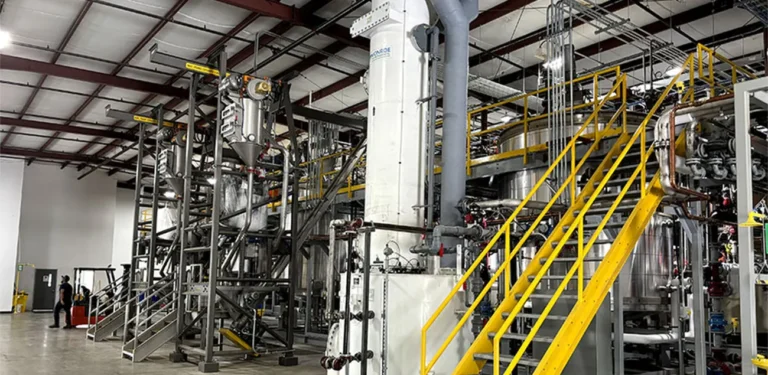
Unique Physical and Chemical Properties
Nickel is a lustrous, silver-white metal known for its magnetism, durability, and corrosion resistance. It is one of only a few elements that is ferromagnetic at room temperature, making it valuable in a wide range of magnetic and electronic applications.
Key characteristics of nickel include:
- Density: 8.9 g/cm³, making it heavier than iron but lighter than copper.
- Melting point: 1,455°C (2,651°F), suitable for high-temperature environments.
- Hardness: It is moderately hard — tougher than zinc or lead, but softer than tungsten.
- Chemical stability: Nickel forms a passive oxide layer that protects it from corrosion, especially in moist or marine environments.
Because of its mechanical strength and resistance to heat and chemicals, nickel is widely used in demanding industrial conditions.
Historical Significance and Discovery
The name "nickel" comes from the German word Kupfernickel, meaning "Devil's copper." Medieval miners in Saxony (now Germany) thought they were extracting copper, only to be frustrated when the ore yielded nothing usable — blaming it on mischievous spirits called Nickel.
Nickel was officially identified as a distinct element in 1751 by Swedish chemist Axel Fredrik Cronstedt, who isolated it from the mineral now known as nickeline.
Long before its official discovery, however, nickel-rich alloys were used in ancient China as early as the 3rd century BCE. Archaeological evidence shows that "white copper" coins from the region contained nickel, likely from natural alloys.
Modern Applications in Science and Industry
Nickel is a critical component of modern technology and infrastructure. Its versatility supports numerous industries:
- Stainless steel production: Nickel improves strength and corrosion resistance, accounting for roughly 65% of global nickel consumption.
- Rechargeable batteries: Especially in lithium-nickel-cobalt-aluminum oxide (NCA) and lithium-nickel-manganese-cobalt oxide (NMC) chemistries used in electric vehicles.
- Aerospace and turbines: Superalloys containing nickel withstand extreme heat and pressure.
- Medical devices: Its biocompatibility makes it useful in surgical instruments and implants.
- Plating and electroplating: Enhances the appearance and durability of metals in consumer goods.
- Electronics and sensors: Used in resistors, batteries, and memory devices.
Nickel's importance in the green transition is growing rapidly, with demand from the EV and energy storage sectors forecast to rise steeply.
Nickel in Culture and Symbolism
Nickel has often been associated with value and strength, though it rarely holds the spotlight like gold or silver. In the United States, the 5-cent coin is famously called a "nickel", which contains 25% nickel and 75% copper.
In modern branding and symbolism:
- Nickel medals are sometimes used in academic and athletic competitions to represent fifth place or participation.
- Nickel-plated finishes are prized for their sleek, high-tech appearance in consumer electronics and design.
- The term "nickel-and-dime" in English idioms reflects its association with small change and minor details — though nickel's real value is anything but minor in industrial applications.
Interesting Trivia and Lesser-Known Facts
- Nickel is approximately the 22nd most common element in Earth's crust, but most of it is deep in the planet's core.
- A single nickel battery in an EV can contain more than 40 kg of the metal.
- The largest producers of nickel are Indonesia, Philippines, Russia, New Caledonia, and Australia.
- Meteorites often contain nickel, and its presence is used to identify extraterrestrial origin.
- Nickel's presence in alloys makes it resistant to seawater, which is why it's used in shipbuilding and offshore structures.
- The U.S. 5-cent coin has contained nickel since 1866, but wartime versions removed it due to material shortages.
FAQ
What are 5 facts about nickel?
- Nickel is magnetic and resists corrosion.
- It was discovered in 1751 by Axel Fredrik Cronstedt.
- Most nickel is used to make stainless steel.
- It plays a key role in electric vehicle batteries.
- Nickel is found in meteorites and Earth's core.
What makes nickel special?
Nickel's unique combination of magnetic properties, corrosion resistance, and ability to form heat- and pressure-resistant alloys makes it indispensable in both traditional and high-tech industries — from steel to space exploration.
What are 6 uses of nickel?
- Stainless steel manufacturing.
- EV batteries and energy storage.
- Turbine blades and jet engines.
- Surgical tools and medical implants.
- Decorative plating and coatings.
- Electronic sensors and resistors.
Is nickel hard or soft?
Nickel is considered moderately hard. It is strong enough for industrial use and resistant to deformation, but still malleable and workable — especially when alloyed with other metals to enhance specific mechanical properties.



